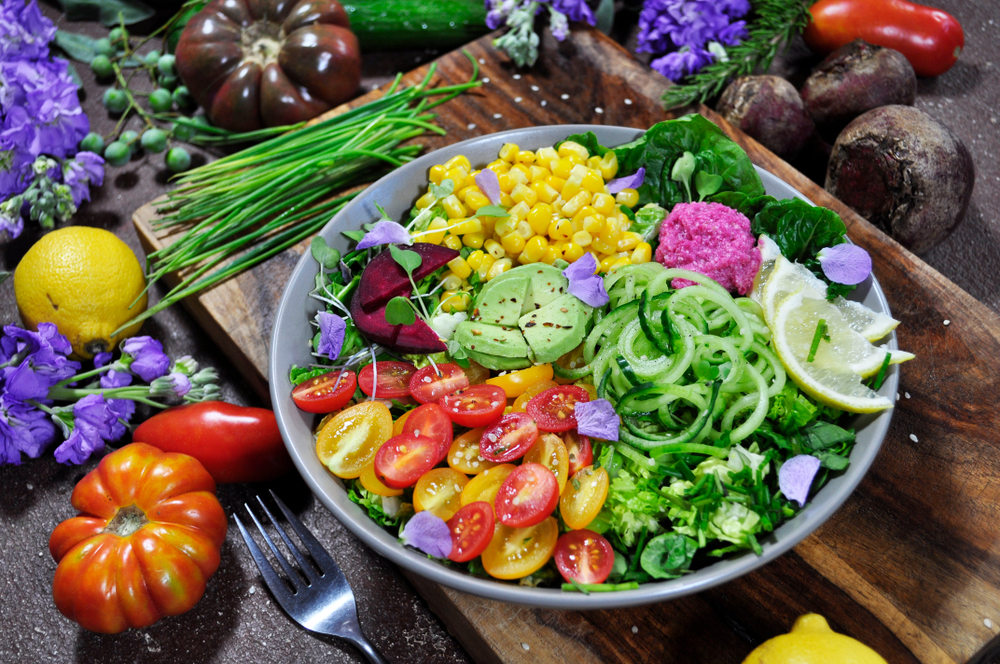What are living foods?
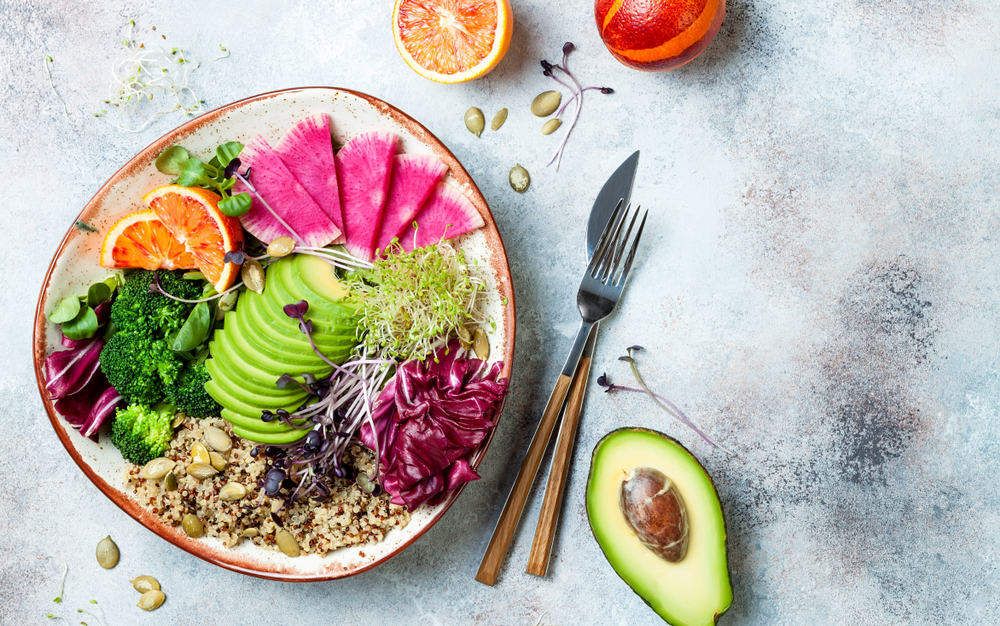
Living foods also called raw food are natural foods, unprocessed and raw plant-based foods that are consumed in their natural state, without cooking or with minimal heat treatment. These foods are considered “alive” because they retain their natural enzymes, nutrients, and life force. The idea behind a living food diet is to maximize the intake of fresh, whole, and uncooked foods to promote optimal health and well-being.
Vegetables, fruits, nuts, sprouted and non-sprouted seeds, superfoods such as seaweed, miso, aromatic herbs, wild plants, cold-pressed vegetable oils are the consumed foods. However, grains are set aside. Moreover, all animal products are excluded. Only natural sweeteners are used. Finally, all ingredients remain raw or are possibly heated up to a maximum of 42°C.
Why Choose a Living Food Diet?
Plants form the foundation of human nutrition. Indeed, They are rich in vitamins, trace elements, enzymes, minerals, and these are almost fully preserved if they remain raw. Additionally, our bodies benefit from good nutrients that bring health and vitality. Furthermore, living food, by providing predominantly alkaline-rich foods, promotes a better acid-base balance in the body.
Some Benefits of a Plant-Based and Raw Diet
- New sensation of satiety, making it a weight-loss ally.
- Improved digestion and body repair through enzymes, contributing to maintaining the balance of our metabolism and avoiding leukocytosis (mobilization of white blood cells to “fight against” food ingestion).
- Maintenance of the body’s chemical balance, including pH, as plants are predominantly alkaline.
- Increased vitality.
- Positive impact on insulin management, regulating blood sugar levels in the body due to the absence of artificial sugar.
- Natural detoxification of the body through a plant-based, raw, and organic diet.
- Pleasure of discovering the authentic flavors of foods.
- Joy of creating beautifully colorful dishes.

Adopting a healthy, nutritious lifestyle with living foods can be complemented by Gema, enriching your wellness journey. This wellness tracker seamlessly integrates your activity, sleep, skin temperature, and more, empowering you to make informed and beneficial health choices.
How Does Cooking Affect the Nutritional Content of Food?
- Vitamins, especially Vitamin C, are partially destroyed by heat.
- Minerals dissolve in the cooking water, along with enzymes.
- Cooked foods are significantly less nutrient-rich compared to raw foods.
- Aromas are released between 30°C to 50°C.
- Enzyme degradation begins at 45°C.
- Vitamin C is destroyed between 60°C and 75°C.
- Most enzymes in fresh produce are destroyed at 80°C.
- Mineral and trace element deterioration occurs around 100°C.
- At 110°C, oxidation of Vitamins A and D, along with destruction of Vitamins E, F, and K.
- At 120°C, the final destruction of remaining vitamins and transformation of certain fats into tar and nicotine.
Does Eating Living Food Mean Always Eating Cold?
You can heat preparations like raw soups to less than 42°C, preserving essential vitamins, minerals, and trace elements that our bodies need. Indeed, it’s important to note that certain vegetables, like green beans, are toxic when consumed raw. Dehydrated preparations are warm if consumed directly from the oven.
Introducing Living Plants into Your Diet
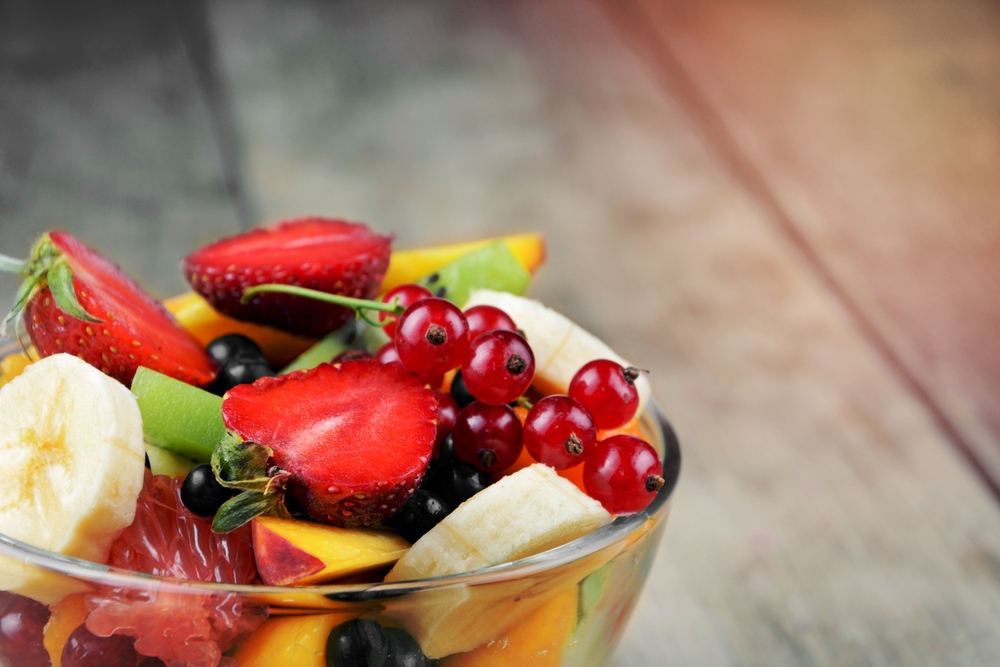
You should take your time when changing dietary habits. Gradually incorporating livelier foods, such as sprouted seeds and lacto-fermented vegetables, prevents the pitfalls of strict restrictions and frustrations that often lead to long-term failure. This approach also allows for observing your body’s reactions to this dietary shift.
The Right Equipment for a Living Food Diet
- High-Power Blender: This grinding device provides a smooth and silky texture to your soups, sauces, creams, etc., in no time. It can also grind seeds into flours and butters.
- Food Processor: Equipped with an S-blade and a set of bowls, blades, and graters, it’s a great daily companion for preparing salads, making pâtés, pastes, and various desserts.
- Mini Blender: Perfect for small-volume preparations, sauces, and grinding spices into powder.

- Slow Juicer: Ideal for making juices and crafting ice creams.
- Dehydrator: Essential for fruits and preparations below 42°C, like crackers, chips, crispy cakes, etc. Also, it’s suitable for germination equipment such as jars.
- High-Quality Knives: Essential for precise cutting.
- Vegetable Spiralizer: Transforms zucchinis, carrots, and more into spaghetti.
- Mandoline: Useful for julienne, slices, or strips of vegetables.
- Strainer or Nut Milk Bags: For filtering sauces and making nut milks.
- Molds: Hinged and removable-bottom molds for tarts and cakes, making it easy to unmold cooled pastries.
Living Food Techniques
Dehydration
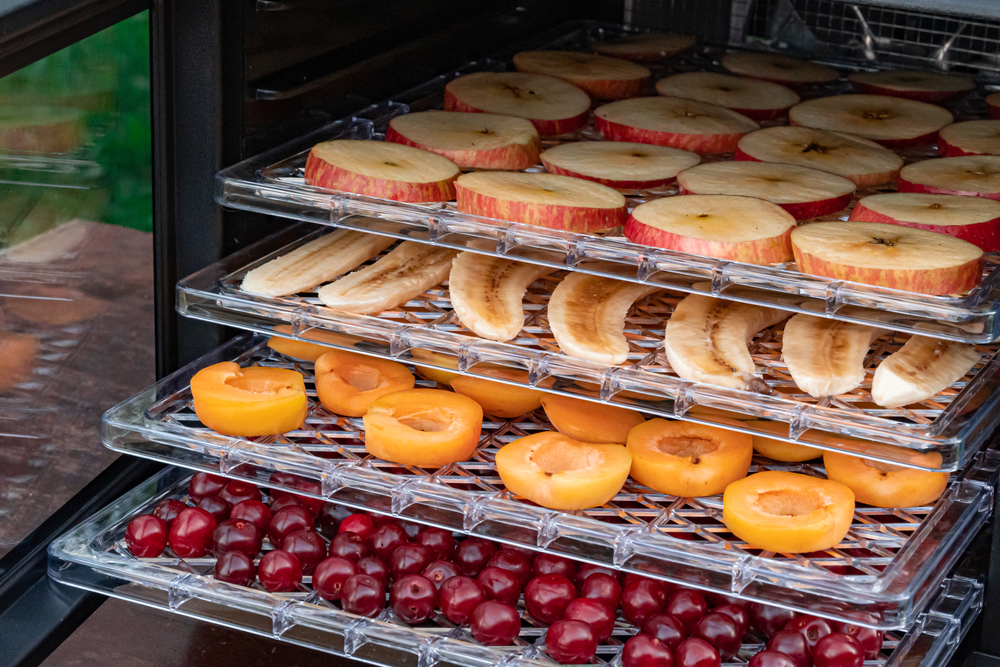
This method allows low-temperature drying at 42°C in a dehydrator. Consequently, it enhances flavors, alters textures, and enables longer food preservation. Besides, the dehydrator functions like an oven with trays, circulating adjustable heat (starting from 30°C) to preserve enzymes, certain vitamins, and all the processes that make living food appealing.
- Fruits: sliced or whole, providing months of preservation after complete drying.
- Vegetables: tomatoes, mushrooms, etc., for extended shelf life.
- Leaves: like Kale, transformed into chips.
- Creams: creating dried crepes for rolling.
- Elaborate Culinary Preparations: crackers, cakes, vegetable softness, burgers, granolas, and more.
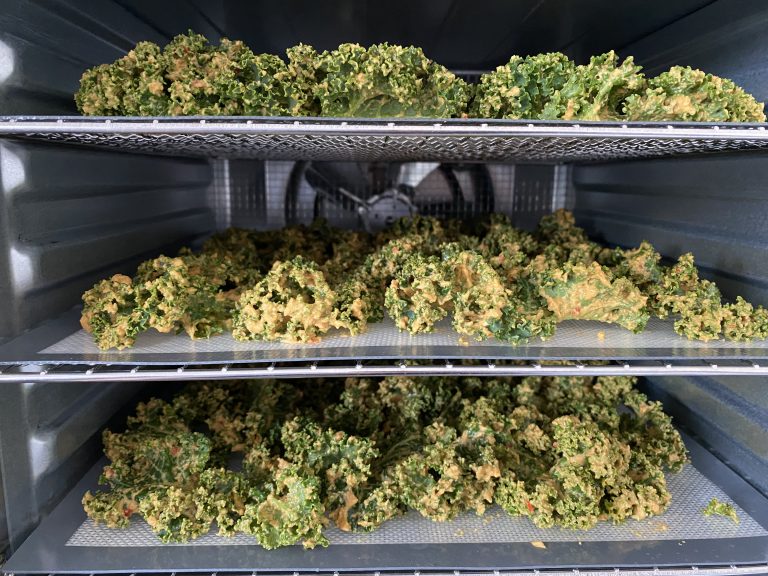
Lacto-Fermentation
Microscopic living activity multiplies nutrients in the fermentation process. In addition, it is the only food preservation method that enhances nutritional and taste qualities while significantly improving digestibility. Thus, lacto-fermented vegetables contain more vitamins than fresh ones! Fermentations strengthen the immune system and support intestinal flora. Bacteria, enzymes, and yeasts are naturally present microorganisms in foods. Also, they transform nutrients for us, turning simple sugars into lactic and acetic acids (vinegar) or alcohol, and proteins into amino acids.
Fermentation is a traditional food preservation method practiced for over 10,000 years.
Lacto-fermentation is a foolproof preservation method, with lactic acid inhibiting microorganisms that could cause decay. Moreover, it’s much more reliable than canning or freezing. Lacto-fermentation requires only salt, clean jars, and can be prepared in just a few minutes.
Germination
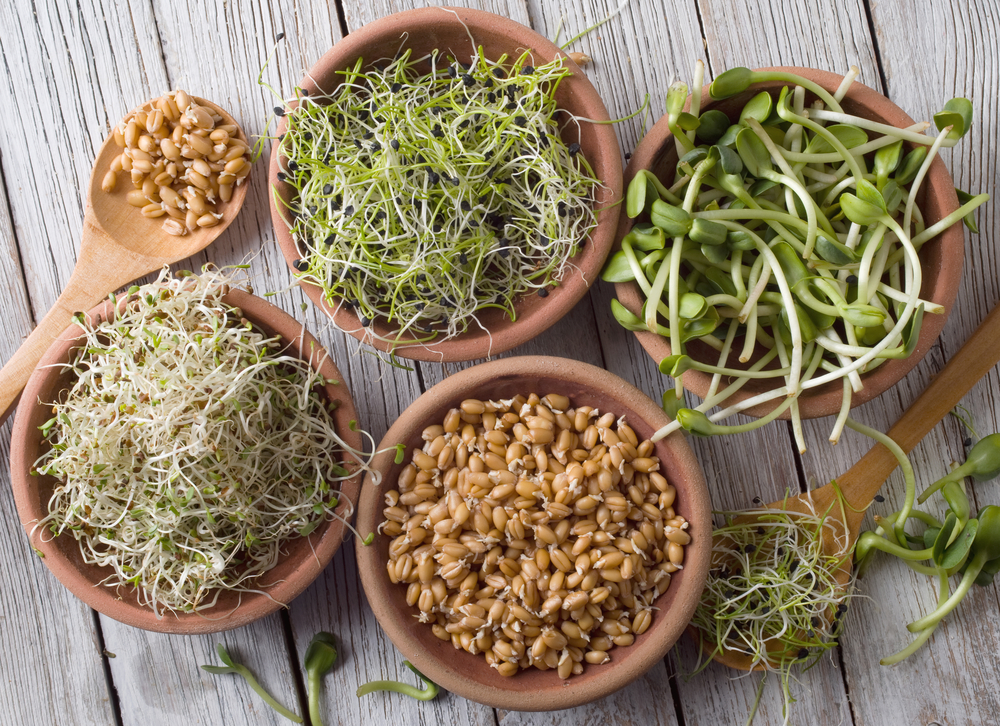
At the end of germination, the cotyledons wither, making way for true leaves that take over to nourish the plant through photosynthesis. Germination is the most affordable and straightforward way to grow your own salads, transforming your kitchen into a garden. Simply soak various seeds (except tomato seeds) in pure water, let them sprout, rinse them morning and evening before harvesting. Basic jars with perforated lids allowing water drainage are sufficient. For example, 2 teaspoons of alfalfa seeds produce a substantial amount of greens for one person in a week.
Precautions to take: Ensure proper ventilation of the seeds and rinse them thoroughly morning and evening to avoid the risk of mold. Then, during rinsing, it is sometimes useful to untangle the sprouted seeds by shaking the jars. Well-rinsed seeds can be stored in the refrigerator for 3 or 4 days. On top of that, any suspicious odor or dark yellow or brown discoloration naturally prohibits consumption.
Soaking Seeds and Nuts for a Living Food Diet

Mashing
This technique allows for tenderizing vegetables without cooking them. Simply massage them with fine salt, allowing the vegetable cells to open and release the water they contain. Spinach becomes tender, zucchinis stay “al dente,” and so on. Therefore, incorporating soaking and mashing into a plant-based diet contributes to the vitality and flavor of the ingredients.
References:
- Raw Chef Marie-Sophie L.
- “I am Grateful – Recipes & Lifestyle of Café Gratitude” by Terces Engelhart with Orchid

